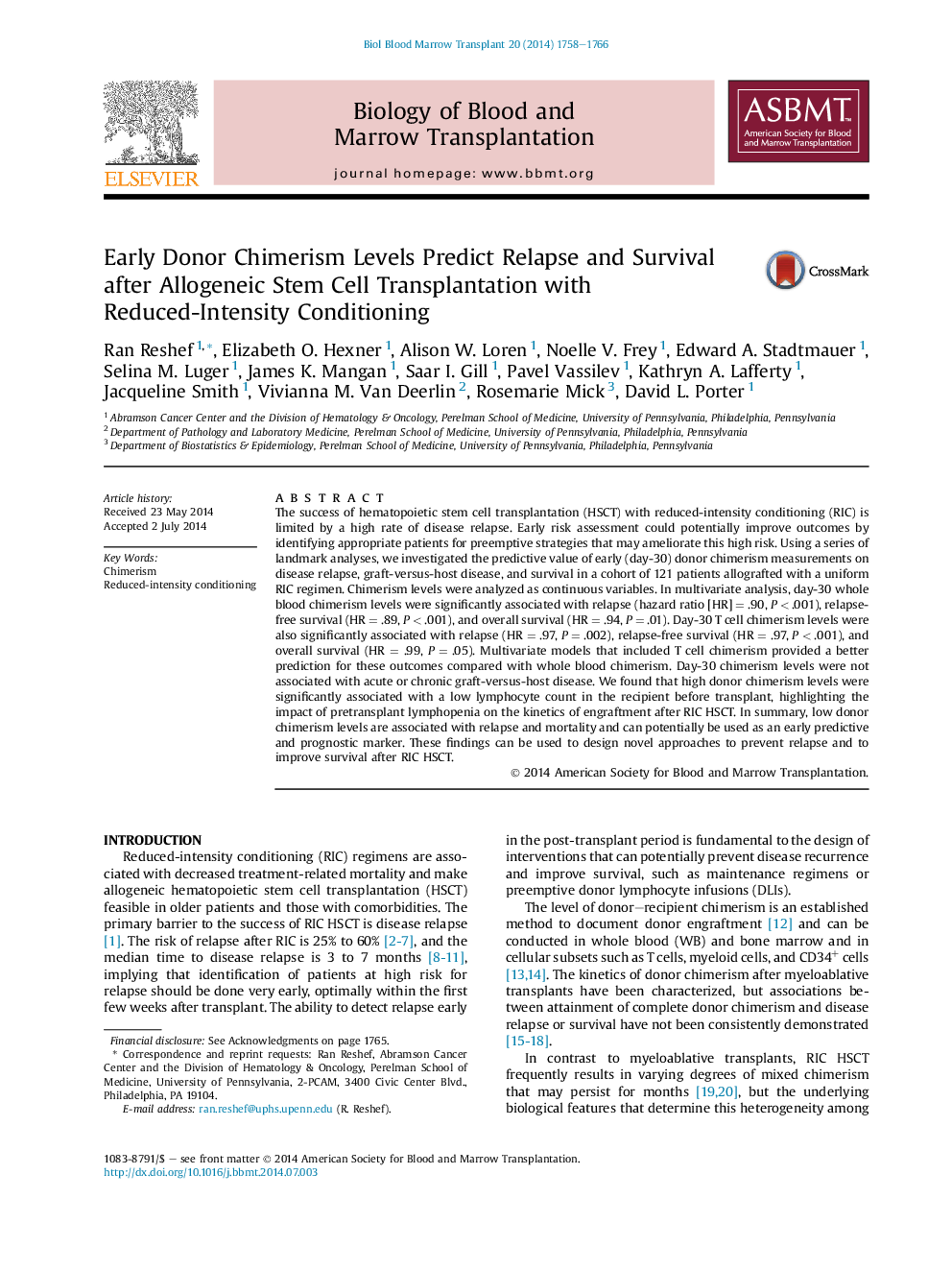| کد مقاله | کد نشریه | سال انتشار | مقاله انگلیسی | نسخه تمام متن |
|---|---|---|---|---|
| 2101980 | 1546274 | 2014 | 9 صفحه PDF | دانلود رایگان |
The success of hematopoietic stem cell transplantation (HSCT) with reduced-intensity conditioning (RIC) is limited by a high rate of disease relapse. Early risk assessment could potentially improve outcomes by identifying appropriate patients for preemptive strategies that may ameliorate this high risk. Using a series of landmark analyses, we investigated the predictive value of early (day-30) donor chimerism measurements on disease relapse, graft-versus-host disease, and survival in a cohort of 121 patients allografted with a uniform RIC regimen. Chimerism levels were analyzed as continuous variables. In multivariate analysis, day-30 whole blood chimerism levels were significantly associated with relapse (hazard ratio [HR] = .90, P < .001), relapse-free survival (HR = .89, P < .001), and overall survival (HR = .94, P = .01). Day-30 T cell chimerism levels were also significantly associated with relapse (HR = .97, P = .002), relapse-free survival (HR = .97, P < .001), and overall survival (HR = .99, P = .05). Multivariate models that included T cell chimerism provided a better prediction for these outcomes compared with whole blood chimerism. Day-30 chimerism levels were not associated with acute or chronic graft-versus-host disease. We found that high donor chimerism levels were significantly associated with a low lymphocyte count in the recipient before transplant, highlighting the impact of pretransplant lymphopenia on the kinetics of engraftment after RIC HSCT. In summary, low donor chimerism levels are associated with relapse and mortality and can potentially be used as an early predictive and prognostic marker. These findings can be used to design novel approaches to prevent relapse and to improve survival after RIC HSCT.
Journal: - Volume 20, Issue 11, November 2014, Pages 1758–1766
